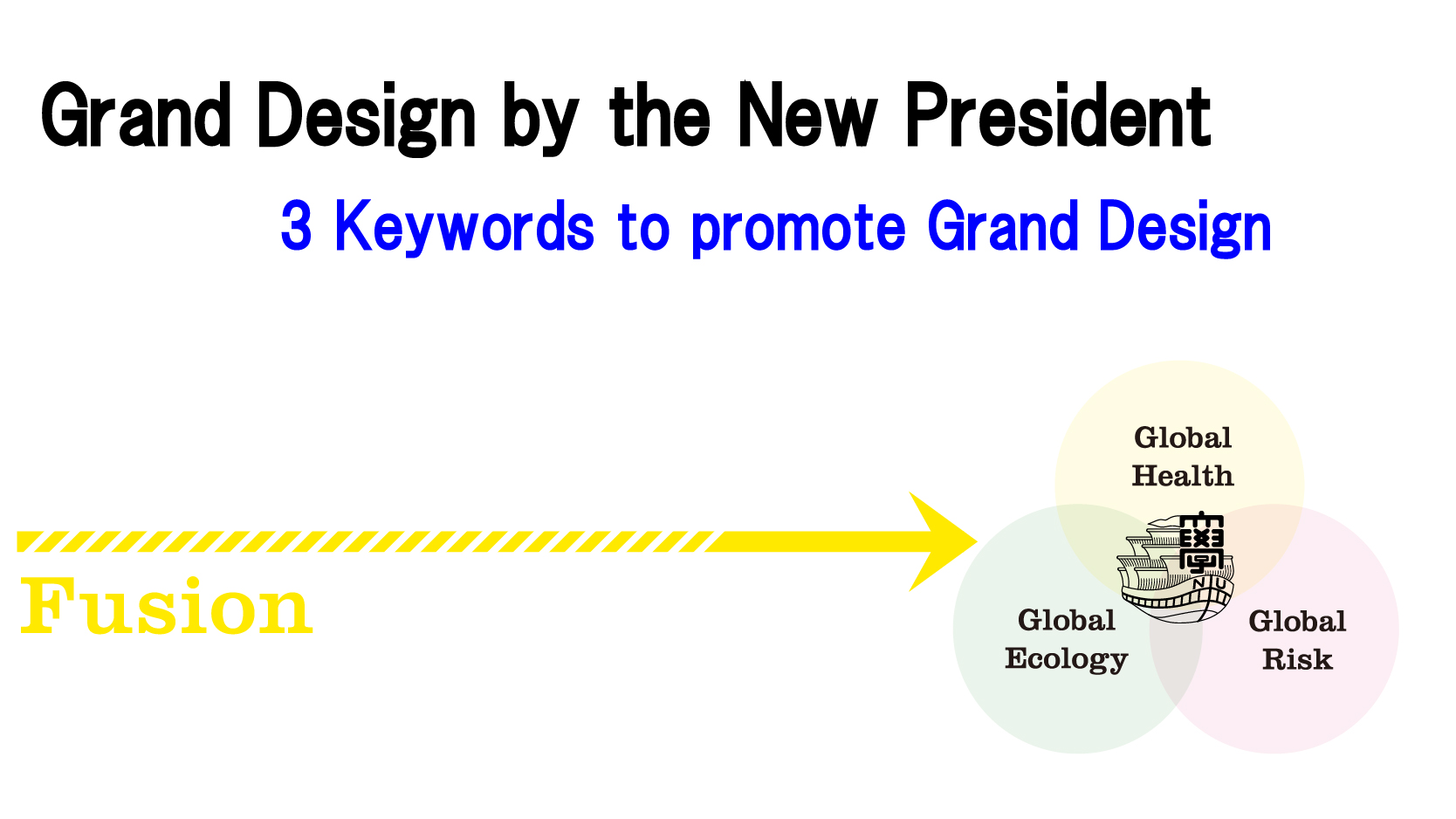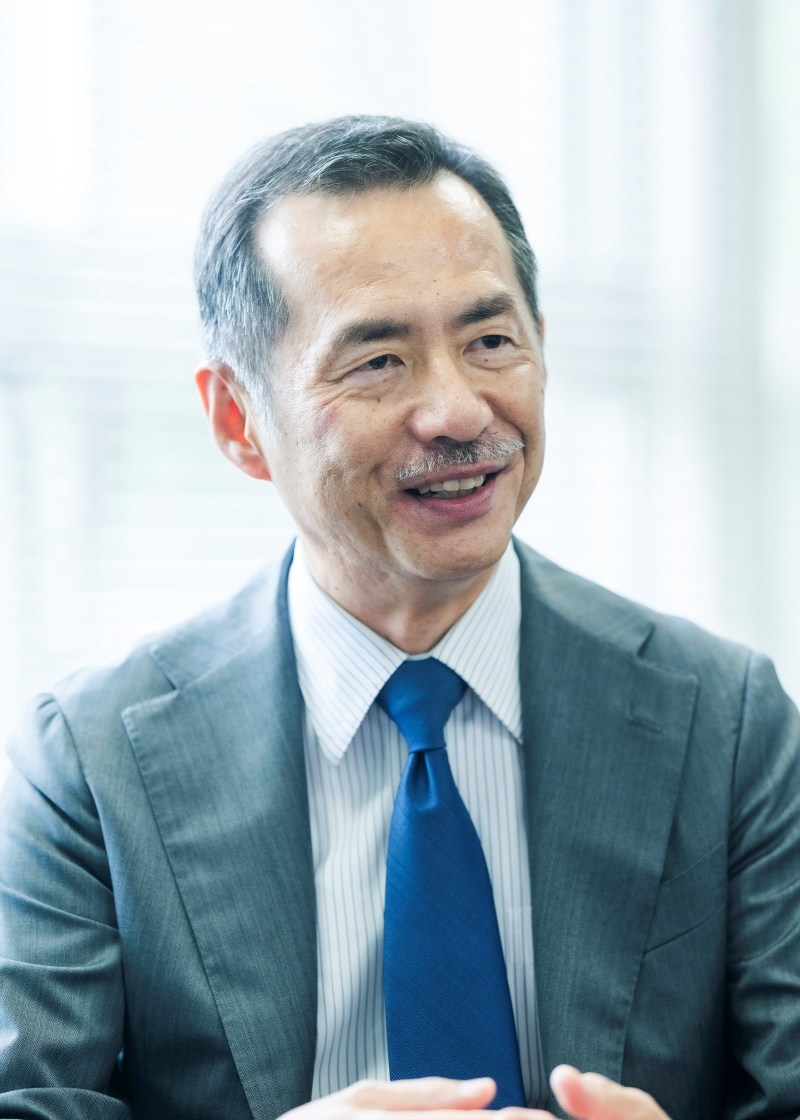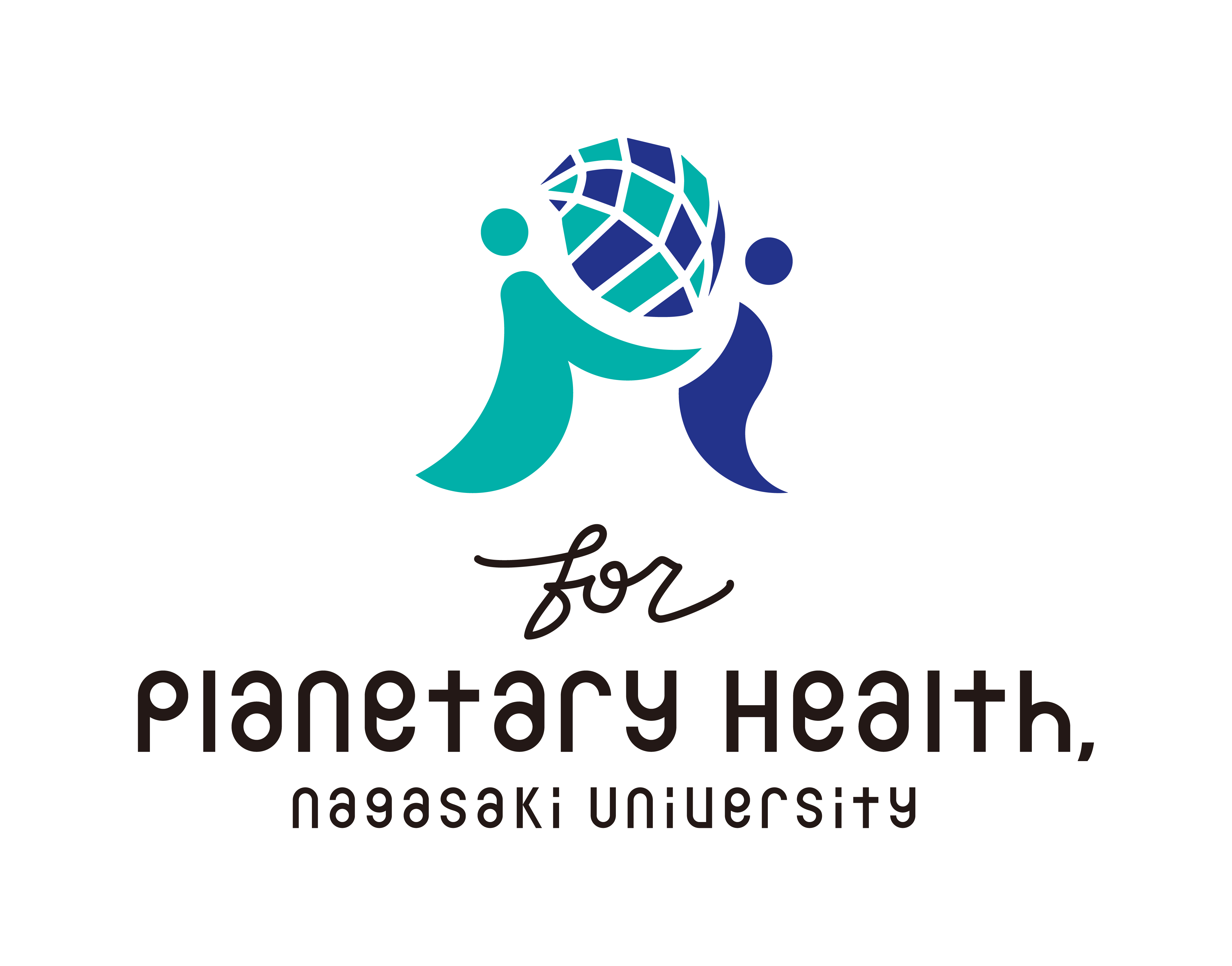January 17, 2024
English version of Choho No. 83, "Ground Design of the University Envisioned by the New President," is now available.

New President Takeshi Nagayasu is launching a new system!
In October 2023, Nagasaki University will embark on a new voyage under a new system.
What is the vision for aiming for more robust collaboration with local communities,
while promoting world-class research and human resource development?
Takeshi Nagayasu will take the helm as the new president and talk about his vision.
 |
NAGAYASU Takeshi Born in Sasebo City in 1962, he graduated from Nagasaki University School of Medicine in 1987 and joined the First Department of Surgery at the same university. He served as professor of Surgical Oncology at the University's Graduate School of Biomedical Sciences, vice president of Nagasaki University Hospital, director of the School of Medicine, and director of the Hybrid Medical Training Center. In October 2019, he was appointed as a director of Nagasaki University, responsible for promoting research and international and social collaboration over two four-year terms. Wakes up at 4:30 every morning. His hobbies include golf, watching movies, and man-watching |
ーPlease let us know your thoughts on the future of the university.
Based on my experience as a research director, the ability to conduct research is essential for the university’s development. However, this does not mean education, the other central university pillar, is unimportant. Research and education are closely related, and as a national university pursuing cutting-edge science, good research is the key to good education. From the viewpoint of further fusion of research and education, the major themes for the future are how to create new knowledge and technologies, implement them in society, and foster the human resources that will carry them forward.
ーPlease tell us what conditions are required to achieve this.
The first is to have a global perspective.
Our university is one of the top runners in Japan and the world in infectious diseases and radiation research, conducting world-class research and training human resources. On the other hand, we should reconsider the area of community contribution, such as industrial revitalization, regarding the social implementation of these research results. How can the university’s research results be used to help local communities in Japan and abroad in response to global-scale issues such as pandemics and Russia’s invasion of Ukraine? Especially in Nagasaki, now is the time to invest in new manufacturing, and the skills of our academia are being tested.
―Let me ask you about the long-term Grand Design. What specific measures have you set forth?
Of course, our university’s goal of “Implementation of Planetary Health” is essential. To achieve this goal, we are considering keywords from three major perspectives. “Global Health,” “Global Ecology,” and “Global Risk.”
The first is “Global Health,” which will continue to focus on research and development that takes advantage of the university’s strengths, as you know, in areas such as infectious diseases and telemedicine while adding science and engineering to this area and focusing on the development of medical devices in collaboration with local companies.
The second is “Global Ecology,” centered on comprehensive marine research. The core of the concept, the industry-government-academia collaboration project “Nagasaki BLUE Economy,” has already started. The project has received high acclaim from the government as a measure to revitalize the aquaculture industry that considers marine life and the surrounding environment and reducing the burden on producers. We also expect the project to contribute to the local economy through collaboration with the humanities, especially the economics department, in areas such as tourism and the issue of population outflow. In addition, there is also a great variety of other interdisciplinary collaboration efforts that can take advantage of the university’s unique characteristics in terms of the environment and ecology, such as advanced drug discovery innovation, offshore wind power generation, and ocean and air pollution risks.
The third is “Global Risk.” Our university has organizations unique to our university that can respond to various global risks, including the Atomic Bomb Disease Institute (ABDI) and the Nagasaki University Research Center for the Abolition of Nuclear Weapons (RECNA).
For example, the know-how possessed by ABDI in the field of biomedical science was implemented at sites such as the Chornobyl nuclear accident and Fukushima. In the future, in addition to RECNA, we would like to see new joint research and human resource development with the School of Global Humanities and Social Science and other humanities fields. This would lead to new discoveries and findings.
―Then, university management will proceed by fusing different research fields, such as research and education, from a global perspective.
Yes, Indeed. It may be a cliché, but we all create and co-create together. Nagasaki has a culture of good-naturedness. We want to incorporate the local character of accepting various cultures and thinking methods into creating a new Nagasaki University. The three perspectives I mentioned are founded on the fusion of good research and education. Based on this, we aim to become a world-class planetary health education and research center by fusing all of our internal organizations, ten faculties, seven graduate schools, and one interfaculty initiative and collaboration with external organizations.
Expectation is the driving force that opens up the future.
―We hear a decline in international competitiveness.
This is a problem that universities nationwide are grappling with. There is a limit to telling researchers alone to do good research and to engage in good collaborative research. When I was the research director, I increased the number of URA (research administrators), whose role is to stimulate research activities among researchers and the university. From now on, we intend to establish a system to “create and nurture” URAs. In any case, we want to promote our ability to conduct research to the government and private corporations and raise their expectations.
―It is essential to make it widely known then.
Of course, I would like individual researchers to not only maintain the status quo but also to use flexible ideas to transcend the boundaries between departments and other research. As I mentioned earlier, new and exciting research is created through fusion. I have high expectations for the Graduate School of Integrated Science and Technology, which will be newly established in April 2024. More cross-disciplinary research will be conducted by combining the School of Engineering and the Faculty of Fisheries/Environmental Science into a single department and installing a new major in the School of Information and Data Science.
―Nagasaki is said to be undergoing a once-in-a-100-year transformation.
We are currently exposed to the corporate spirit and the movement to improve Nagasaki prefecture by investing large amounts of money, such as the redevelopment of the area around Nagasaki Station and the construction of Stadium City. I am thrilled myself. How can academia respond to the anticipation of Nagasaki prefecture, which is about to undergo a significant transformation? We want students to be excited about learning in such an environment. That sense of expectation will become the driving force to open up the future.
 |
※Nagasaki University’s concept of Planetary Health: An initiative that seeks practical answers (solutions) to continue supporting the “health of the earth” and encourages changes in our consciousness and behavior. |










